Overview of the onboarding of Notion and Airtable to find their strenghs and weaknesses and how to craft the best SaaS onboarding experience.
Only 40% to 60% of the customers signing up for your product will get onboarded.
Time matters a lot. Your customers need to grasp how to achieve their desired outcome as soon as possible, they don’t want to start by setting things up for hours, or even 30 minutes.
Sample data is a great tactic to get your customers to onboard quicker but it’s critical that you know what kind of data you have to present to them.
Personalization: A Mindful Process
Plenty of applications face that problem. But it’s especially hard for companies like Notion and Airtable with almost unlimited use cases. Yet, they have stellar growth.
How did they do that?
With the power of personalization.
Yes, they have great marketing strategies, but the onboarding experience is still the most crucial to acquire customers.
Imagine signing up for one of these products and get a blank state. You wouldn’t know how to get started.
Millions of people are trained to use Excel every year! Something new B2B SaaS with self-serve onboarding can’t do…
But you also can’t cram every data template for every possible use case in a single onboarding flow.
You have to make careful choices to reduce friction as much as possible while providing the right experience depending on the customer. Your customers need an adequate experience with adequate friction to get to their desired outcome.
How Notion Handles Personalization
I will not show you every screen of the onboarding but only what I think is relevant to personalization. But let’s start with the first screen that’s not relevant to personalization but is interesting nonetheless.
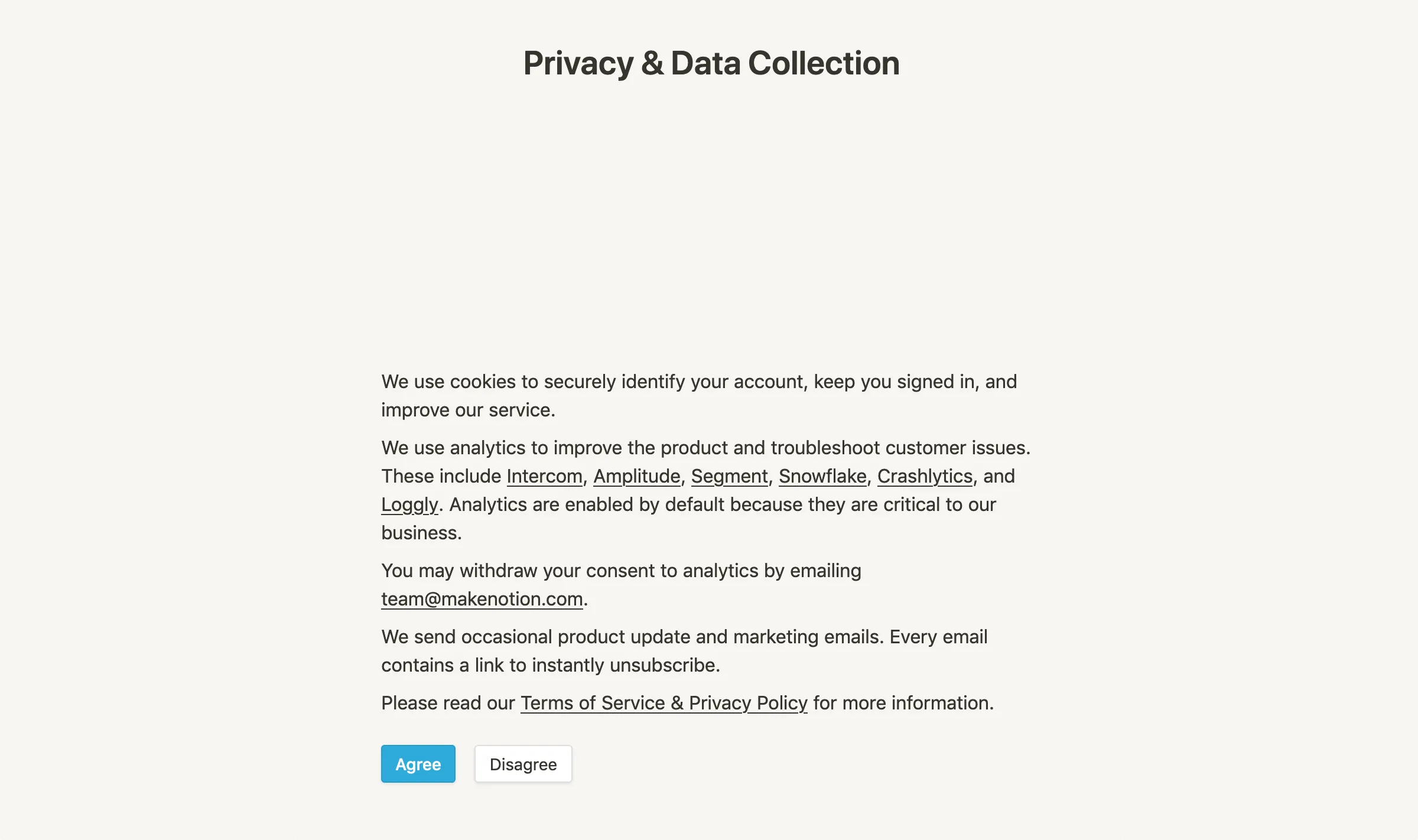
Compared to most products, Notion decided to show a clear condensed privacy notice when you sign up mentioning all the analytics tools they use. I really like the transparency here and most of the important information is here.
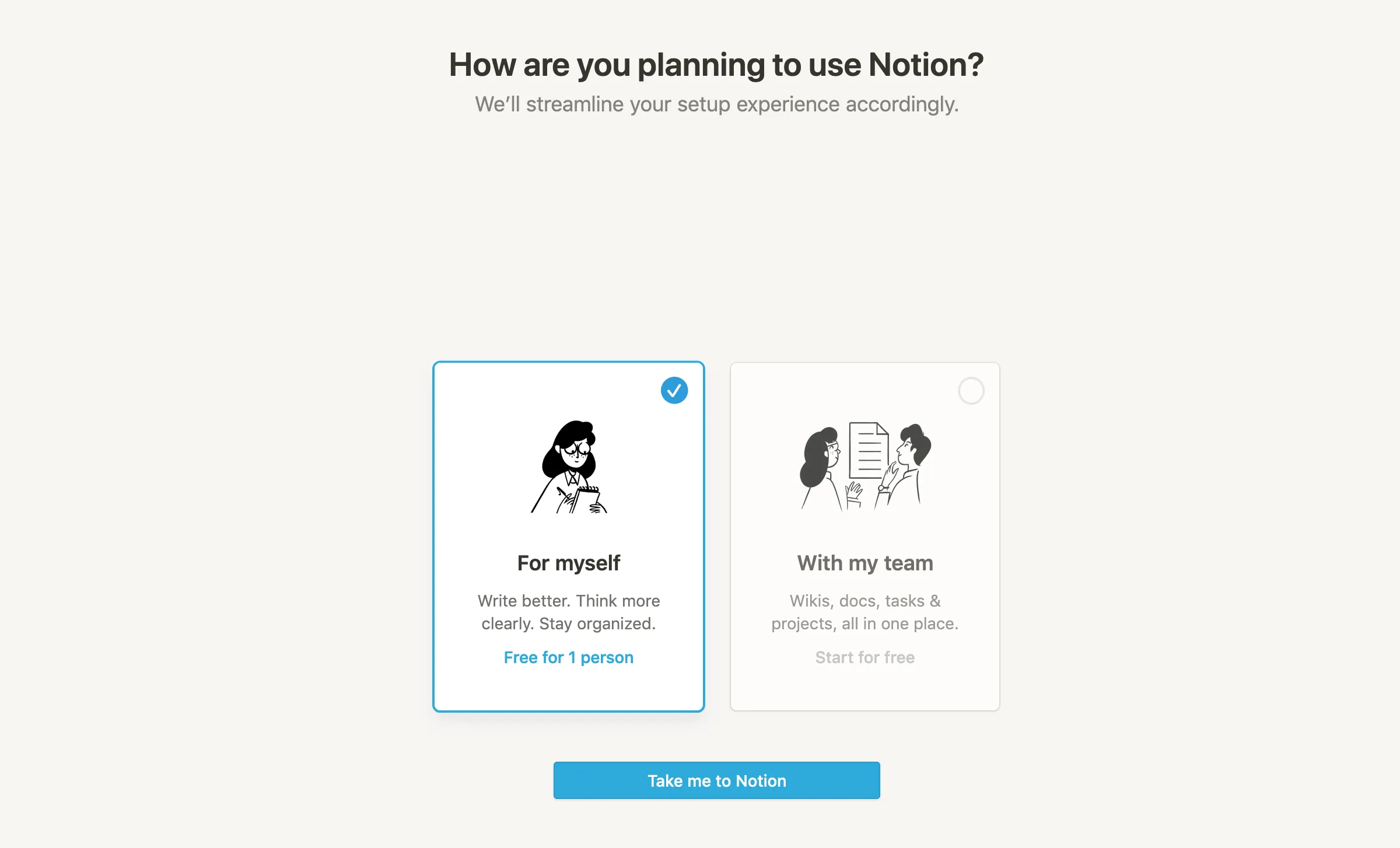
The first choice you have to make to personalize the experience on Notion is to choose if you want to use it for yourself or with your team. Let’s see how it changes the personalization.
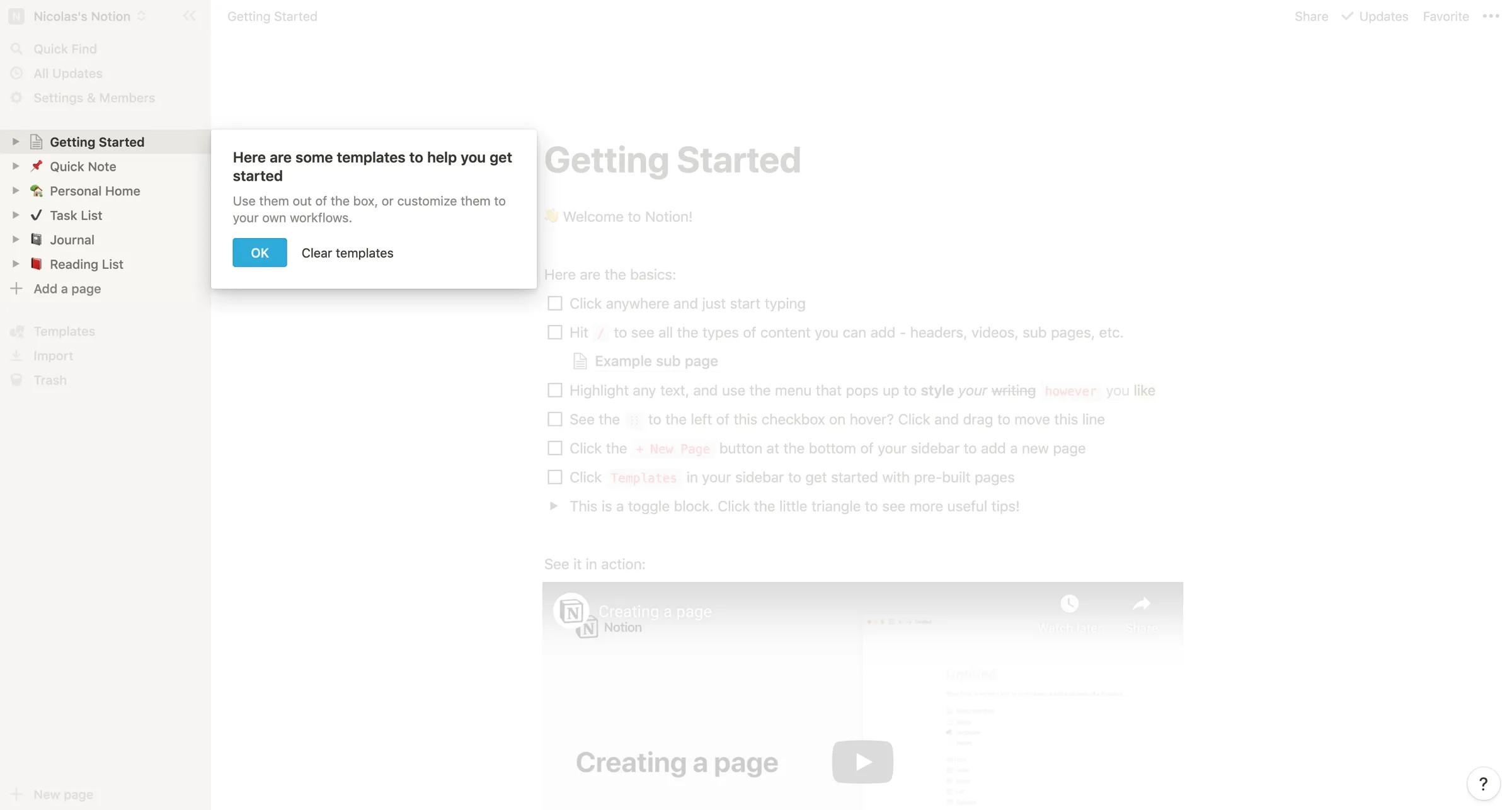
If you decide to use Notion for yourself, you end up on a workspace that has pages for personal use: reading list, movie list, recipes, travel plan, etc. Notion assumes that using it by yourself means personal use.
Note that you have the ability to remove the templates they added to the workspace. A precious option for customers that know what they want and don’t want to spend time deleting all the templates manually. That’s something you should consider for your onboarding if it’s not already the case.
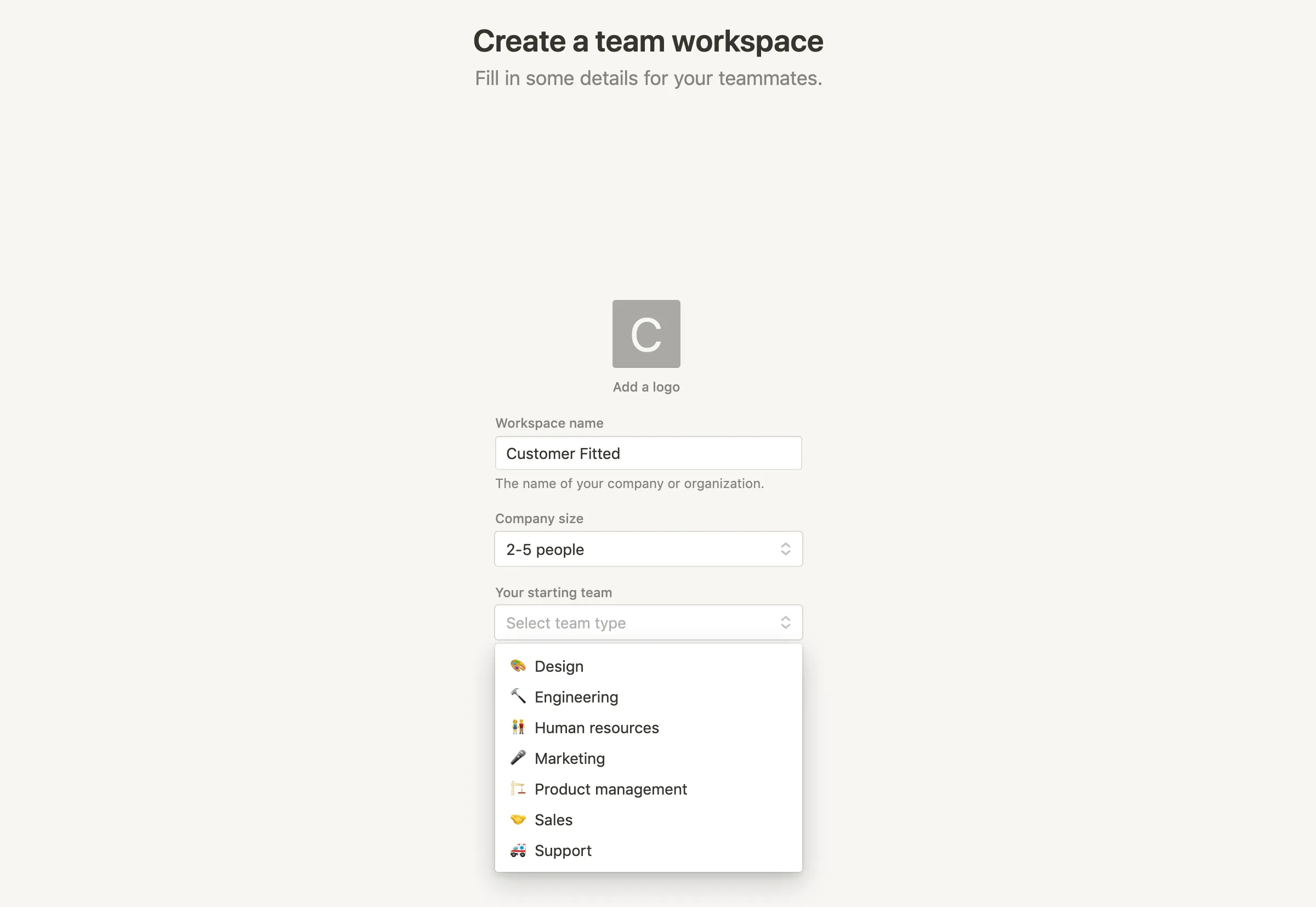
If you decide to use Notion with your team, you get a couple more steps before you can see your workspace. First, you need to name your company, choose the company size, and which team you are in.
I assume that if you select a company size that is big enough to be considered in the enterprise segment, you would be contacted by the customer success team or something similar.
The team selection is where the personalization of the self-serve experience is going to happen. Depending on the team, you will start with a workspace that supposedly fits your needs.
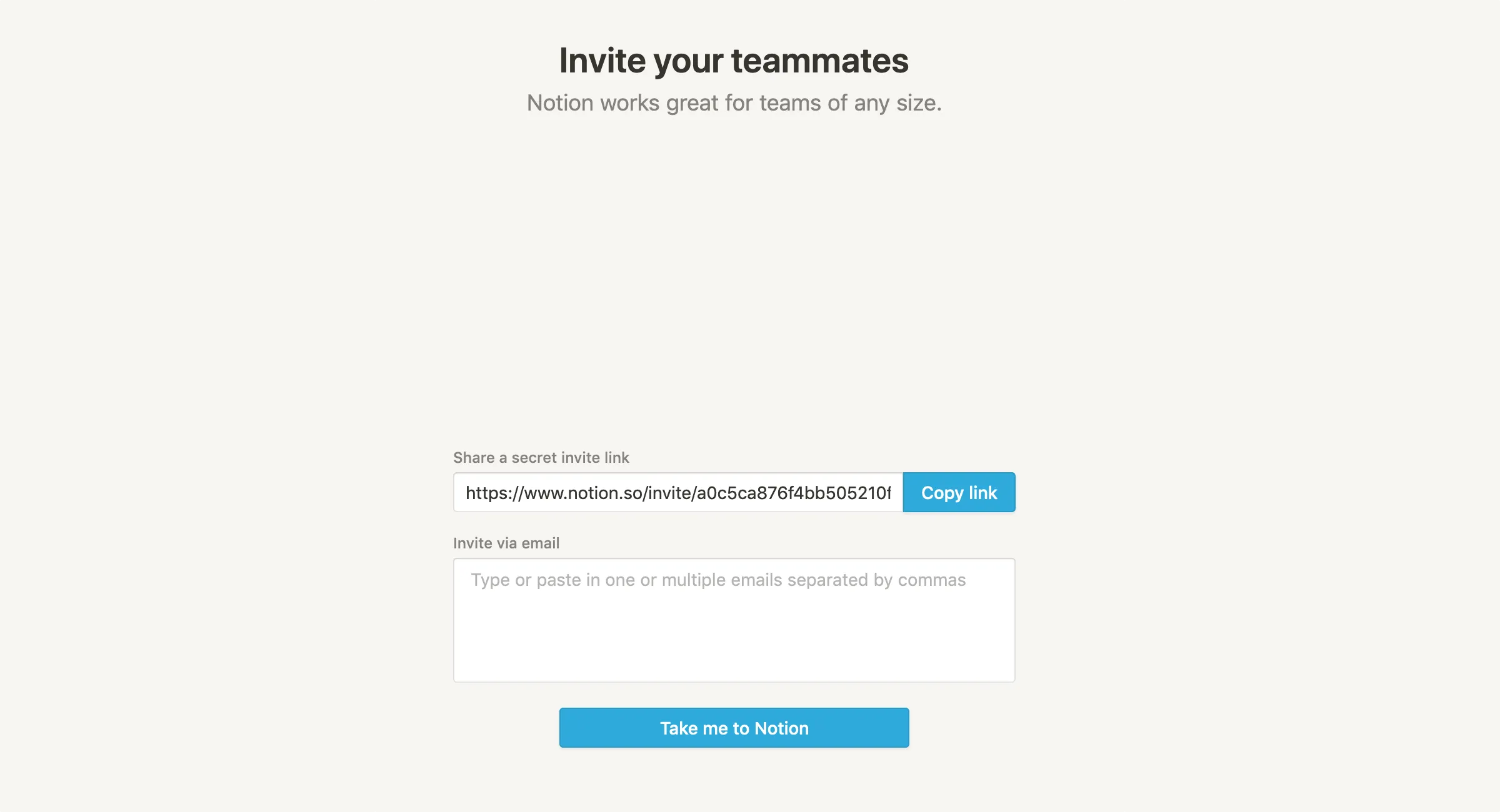
You have one last step before getting to your workspace and it’s the classic form to invite your collaborators. Note that you get it only if you choose Notion with your team. For the personal plan, you won’t get it (I highlight it to compare it with Airtable).
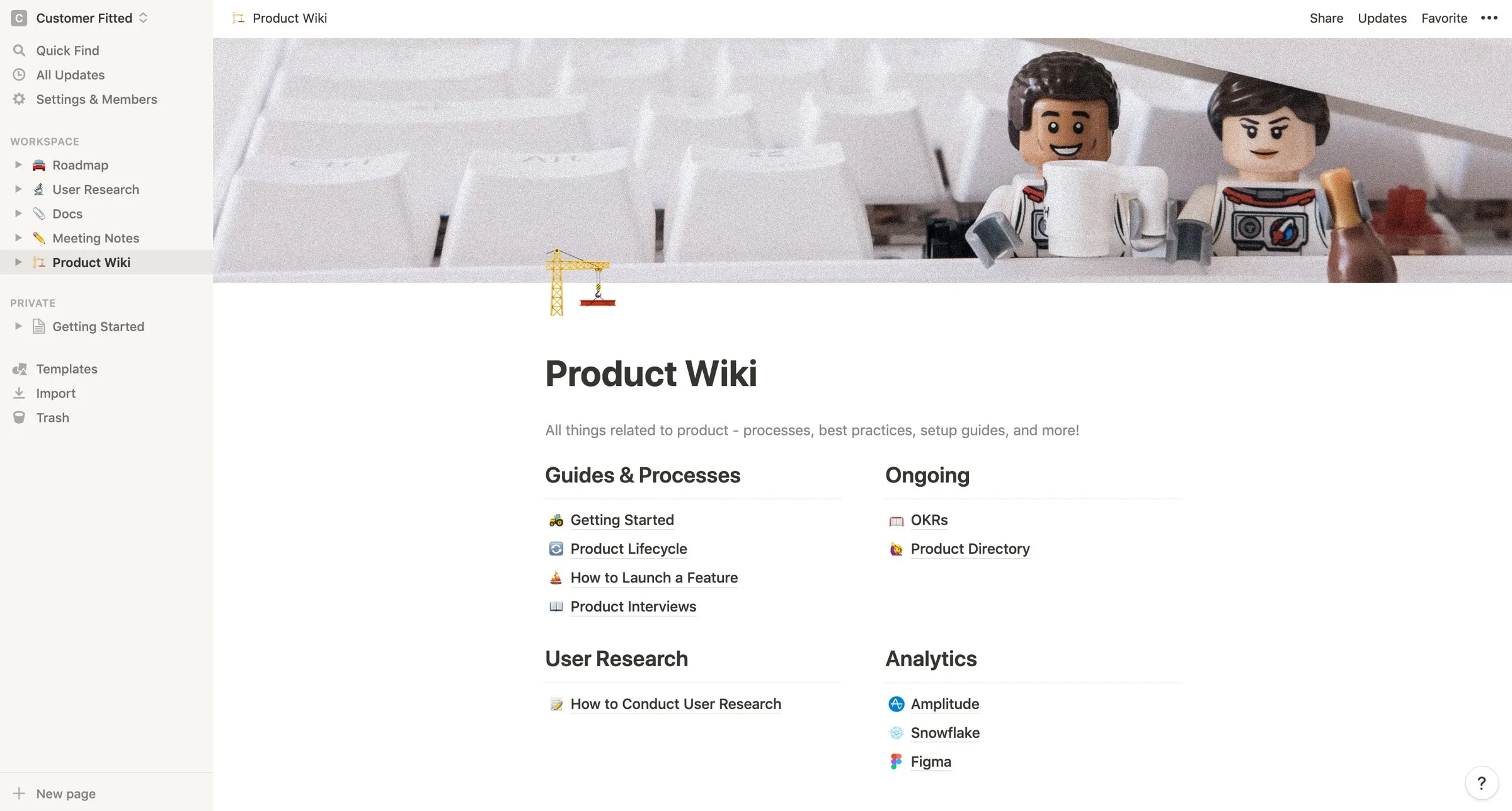
You finally get to your workspace and you have everything you should want. I selected “Product management” and the workspace has pages for OKRs, user research, roadmap, etc.
How Airtable Handles Personalization
Notion has plenty of customers using it for personal use cases which is why they have made 2 distinct experiences, it’s not really the case for Airtable. So let’s see how the Airtable onboarding is.
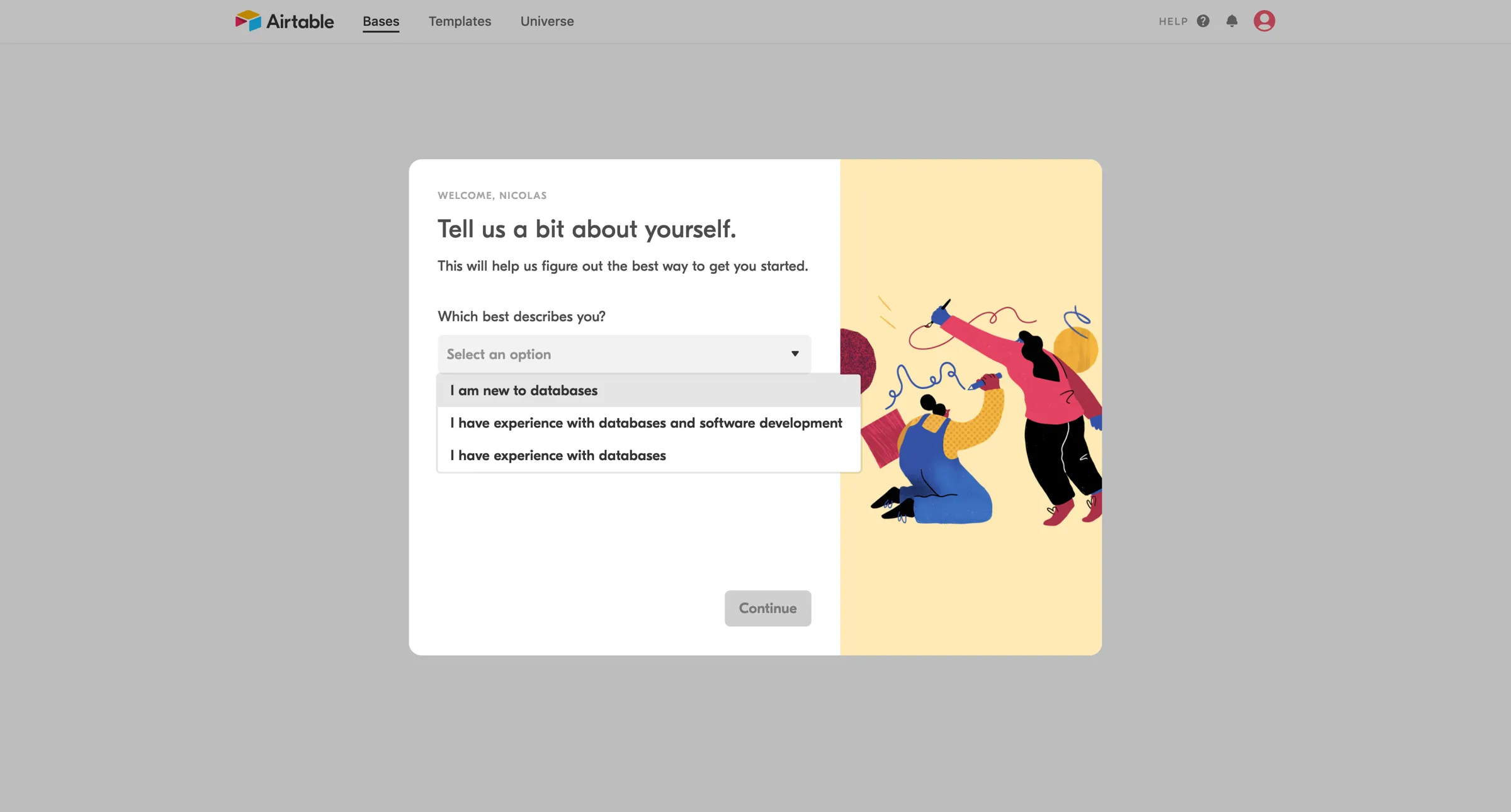
They begin to ask you if you know about databases or not.
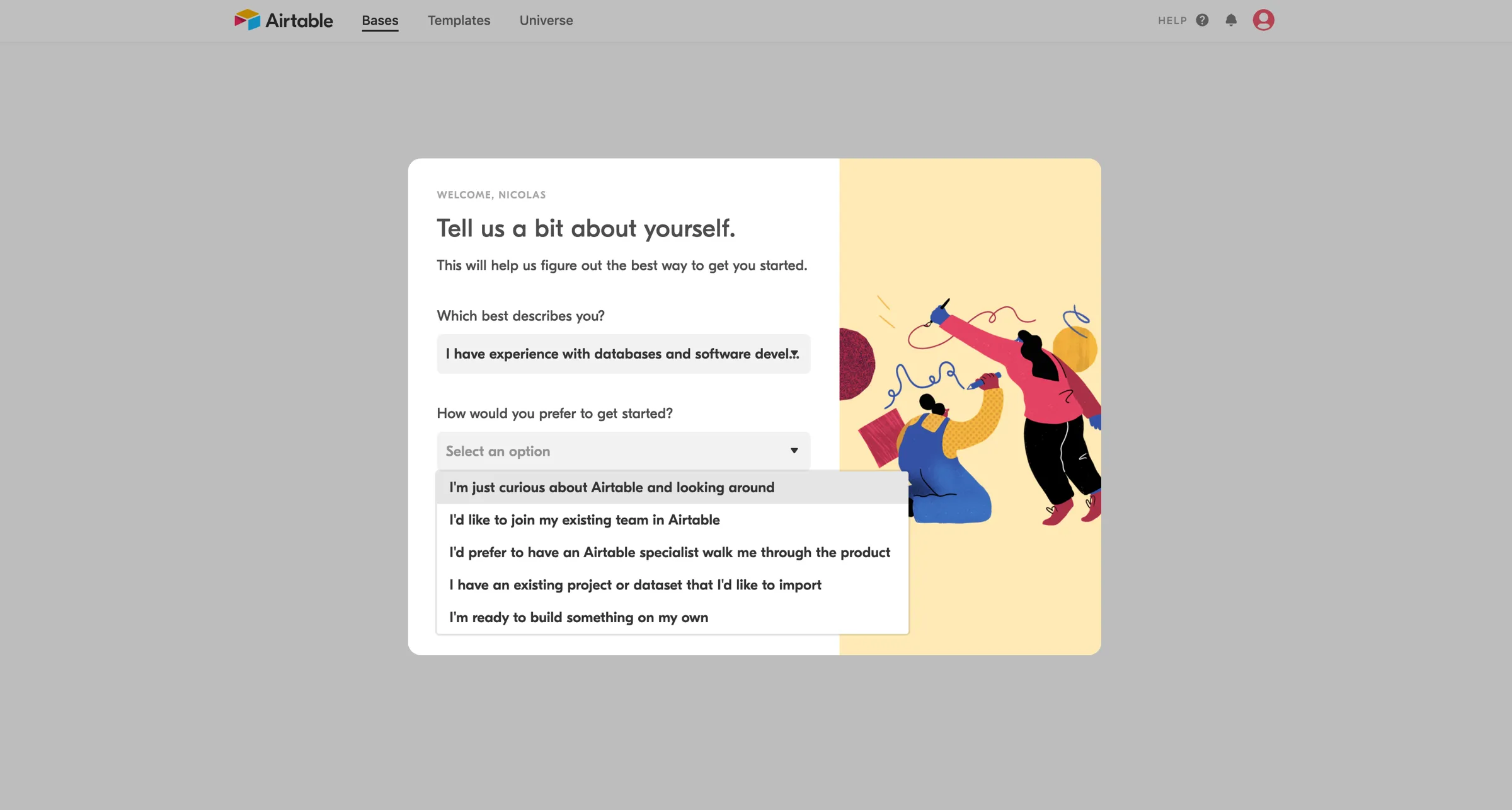
Whatever you selected for the previous question, you will get the same choices for this question.
But not in the same order! If you said you were new, the first choice will be to contact a specialist.
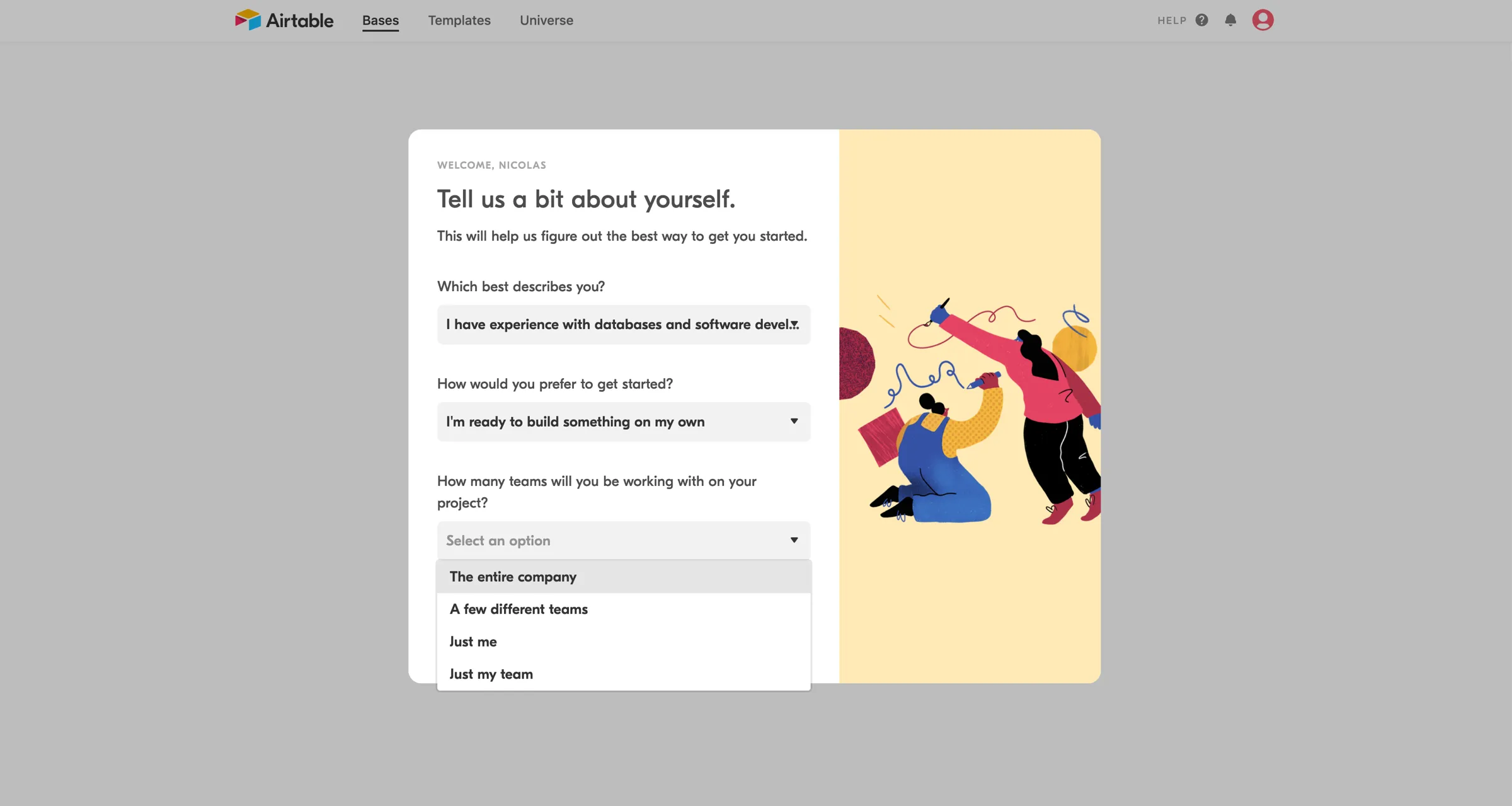
The third question asks you how many people will use the product. Instead of doing like Notion and asking the company size, they are able to precisely understand your needs.
It’s also a question I use when I run surveys because you get a better sense of how the product is used than asking for company size.
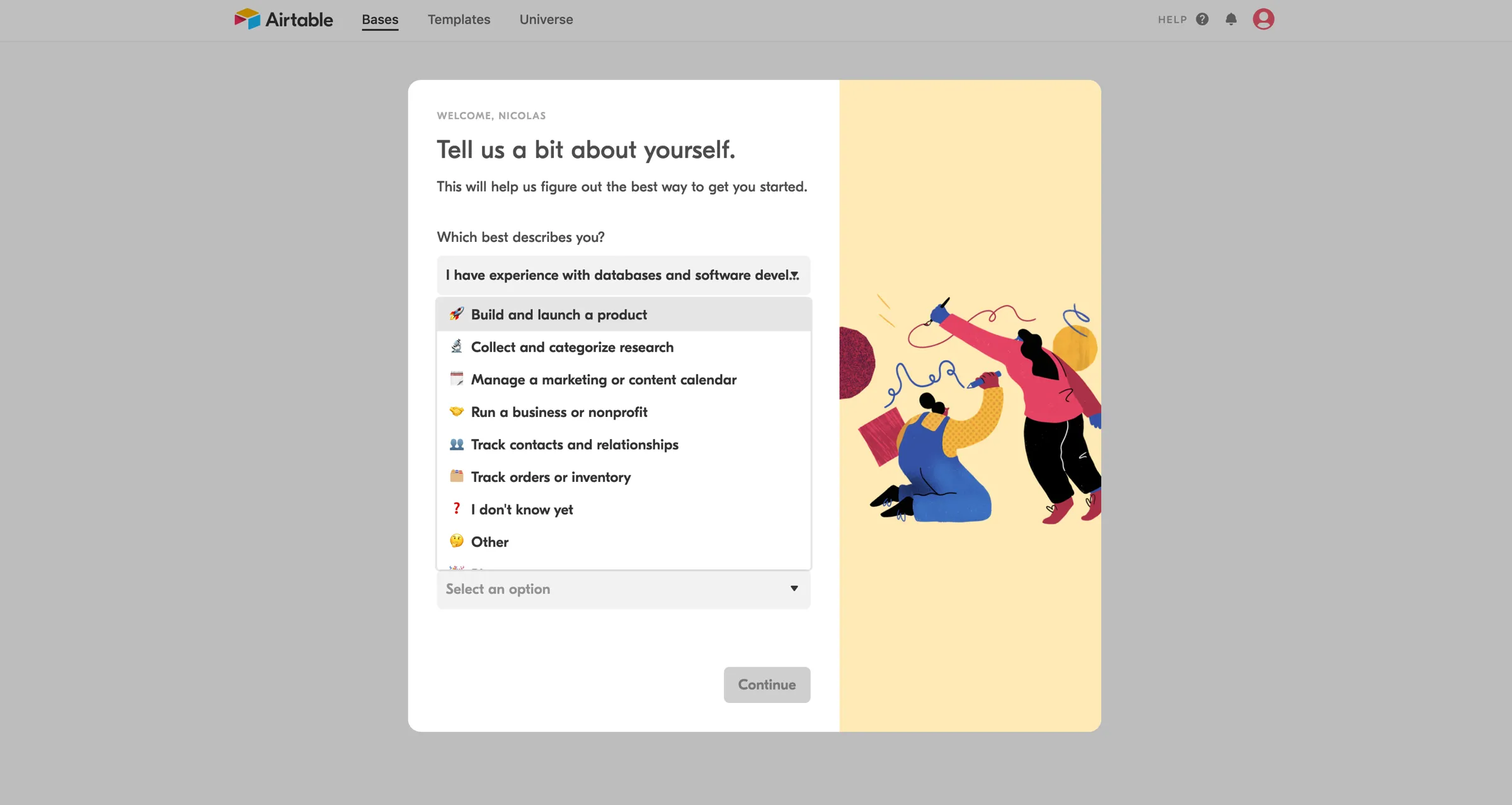
And finally, the fourth question asks you what do you want to do with Airtable. Depending on the choice here, you will get the database that best fits your needs.
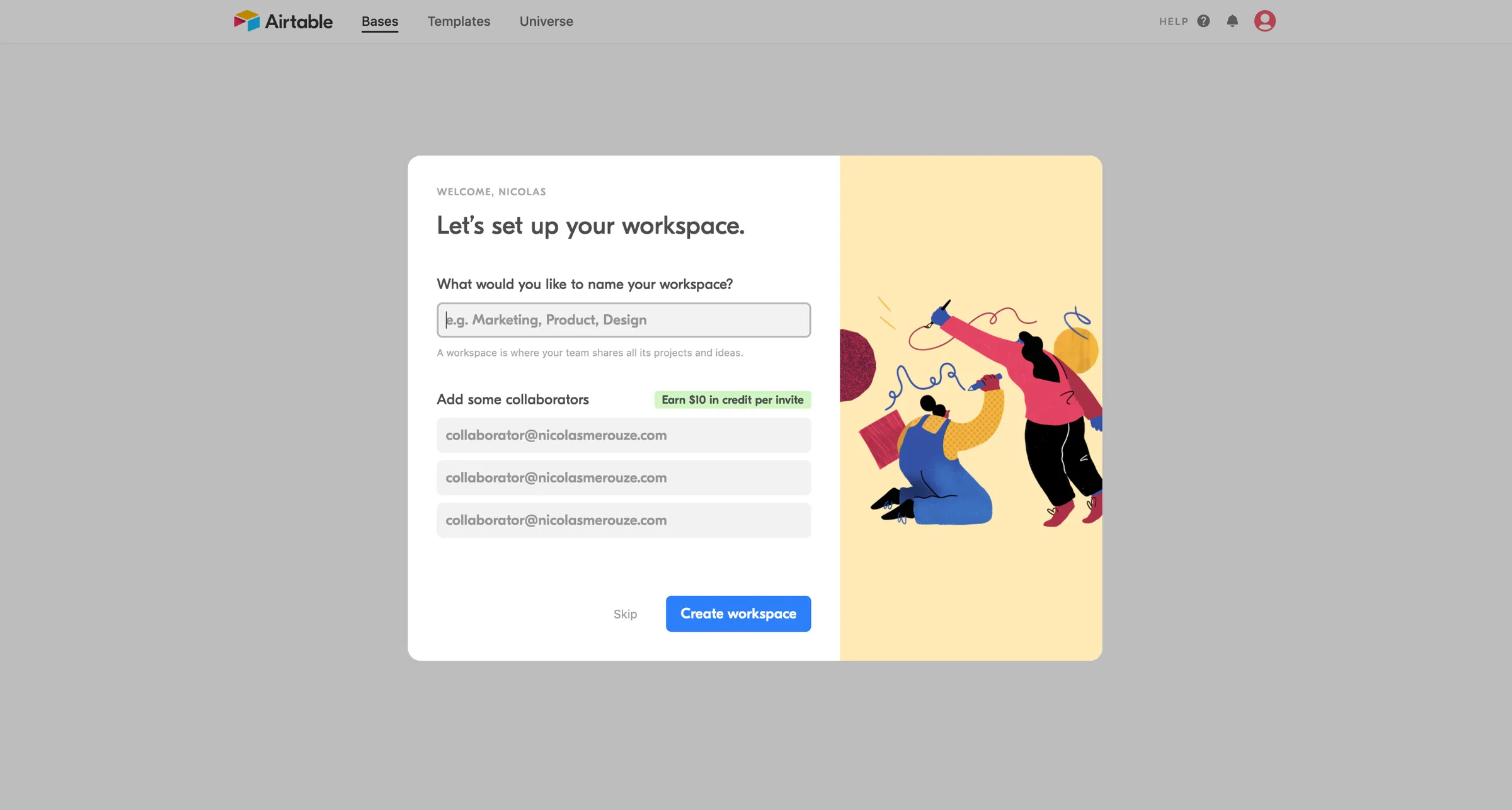
Before getting into the product, they also have the screen to add collaborators. But you get it even if you answer “Just me” to the third question. Not great personalization here…
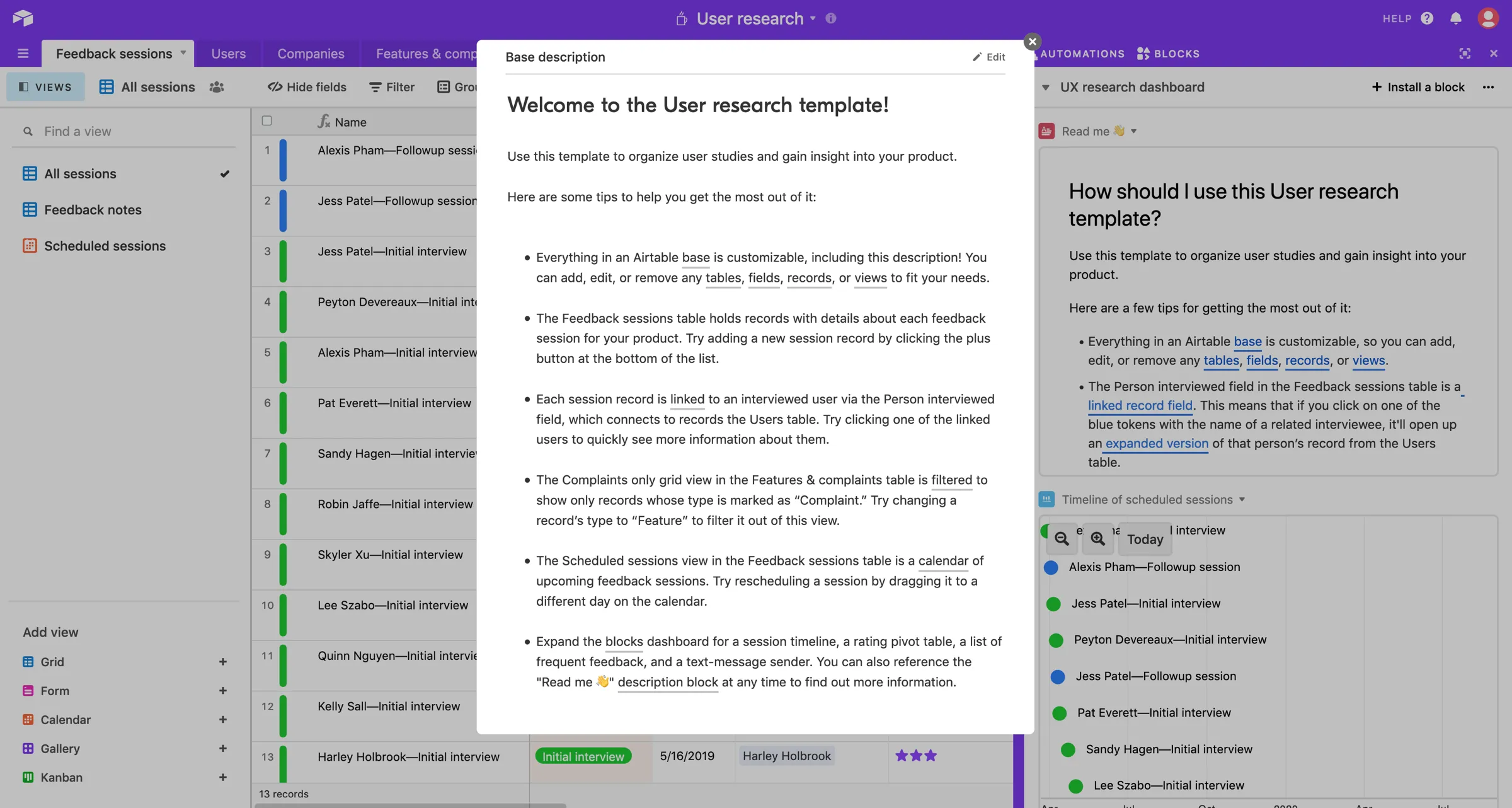
Here I selected “Collect and categorize research” previously and got the corresponding template.
JTBD vs Persona
So here we have, two different ways to populate products with data. Notion uses customer roles to determine what data to show them while Airtable uses jobs to be done.
What difference does it make?
By using jobs to be done, Airtable doesn’t assume which team the customer is on. I selected “Collect and categorize research” and I got right into researching. I could have been a product manager, a UX designer, the lead in a Research Ops team, or even a solo founder.
With Notion, you might not even be able to find your team and be stuck with something you don’t want. And worse than that, they assume that if you want an account for 1 person, it’s for your personal use.
Therefore it excludes solo founders or people that want to try Notion on their own professionally before introducing it to their company, and more use cases I haven’t think of.
If you want to know more about Jobs-To-Be-Done, read this article: How To Start Jobs-To-Be-Done In Practice Within The Hour
Final Thoughts
Don’t get me wrong, Notion is a great product I use every day. And their onboarding works very well for a majority of their customers.
Personalization and sample data will definitely increase your onboarded rate, whatever customer research methodology you use.
But at this stage of the customer experience, optimization can have a tremendous impact on your revenue.
And using JTBD might be the thing that could make you achieve your goals.